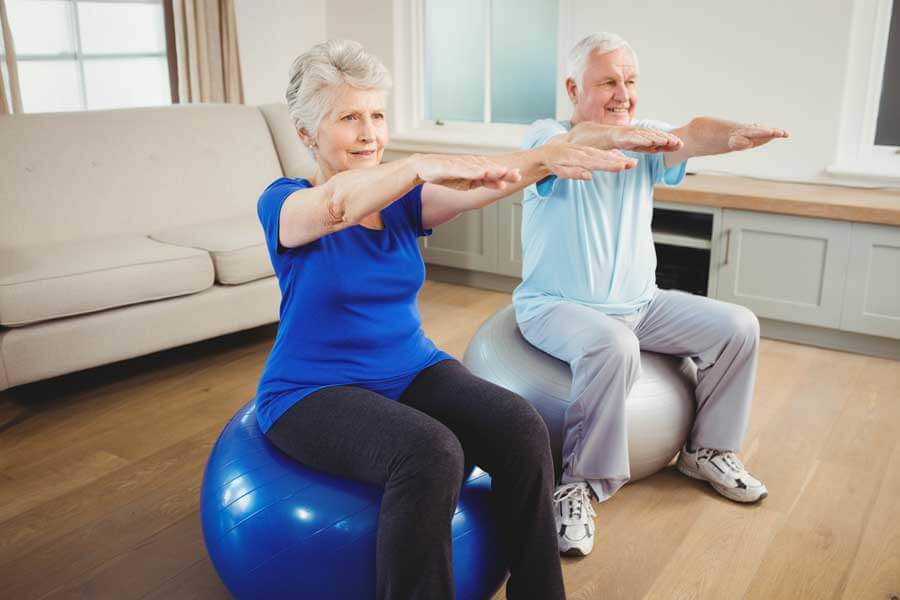Exercise ideas for the over 50’s

Ensuring that you are active as you get older is key to staying healthy, as well as feeling and looking your best. Regular exercise is proven to lower the risk heart disease, reduce the risk of diabetes, and lower your chances of getting certain forms of cancer – including breast cancer and colorectal cancer.
By exercising at home, it’s possible to improve balance, flexibility, endurance, and strength, helping you to stay healthier for longer.
Aerobic exercises
Aerobic exercises are good at helping improve heart health, improving joint movement, burning off calories, increasing energy levels and helping with balance.
The NHS recommends that you do either 75 minutes of vigorous aerobic activity, or 150 minutes of moderate aerobic activity, each week – in combination with two periods of strength exercises each week.
Moderate aerobic activity
Starting off doing some moderate aerobic activity is always the best place to begin when you first get into exercising. Moderate aerobic exercises raise your heart rate and make you breathe faster, as well as making you feel warmer.
Your daily activities, such as shopping, cooking and housework, unfortunately do not count towards the NHS recommended 150 minutes of aerobic activity – so you’ll have to find another way to get your heart rate up.
If you’re looking to do some moderate aerobic activity, you can try a brisk walk, go to water aerobics, ride a bike or even do some light gardening.
Vigorous aerobic activity
Once you have mastered the moderate aerobic activity and you feel like setting yourself more of a challenge, you should move towards vigorous aerobic activities. There is evidence that vigorous activity has health benefits above and beyond aerobic activity of moderate intensity.
Vigorous aerobic exercises should make you breathe hard and fast. While exercising vigorously, you shouldn’t be able to say more than a few words without taking a breath.
If you want to start trying vigorous aerobic exercise, activities that you could do include; jogging or running, tennis, football and martial arts. Certain martial arts, such as Taekwondo, Judo or Jiu Jitsu, lend themselves well to older martial art students and have even been proven to help prevent serious injuries in elderly people who have fallen over.
Hiking and running are also great ways to do a more vigorous aerobic exercise. Not only do you get a full aerobic workout, but you also get yourself out in nature – which has plenty of benefits in itself. Forest walking is proven to lower your blood pressure, and exposure to nature also improves the function of the immune system, according to a Japanese study.
Strength exercises
While aerobic exercises are good at helping certain areas, you also need to include strength exercises to help build up your muscles and maintain the power you need to stay active. You need the strength in your muscles in order to move around during the day, as well as to maintain a healthy weight and properly regulate your blood pressure and blood sugar levels. Strong muscles also help build and maintain strong bones – which becomes even more important as you get older.
While traditional strength exercises, such as sit-ups or press-ups, are not very practical as you get older, there are still ways to build muscle strength. Lifting weights is not out of the question. Other exercises that increase the level of resistance work well too, so anything in a pool is a good example too.
You can even build strength activities into your everyday life. For example, try carrying or moving heavy loads – like groceries, or doing heavy gardening – such as digging or shoveling. Alternatively, yoga can also build muscle strength by using complex but controlled postures.
Make sure that before you start exercising, you consult your GP to ensure that you do not put yourself at risk. If you’re looking for some exercises to do at home, the NHS has a great PDF of exercises for older adults.

